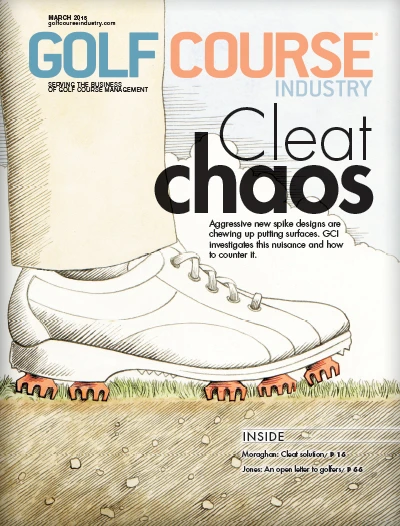
|
|
How many hours have you and your staff spent looking for an isolation valve, wire splice or pipe? How frustrated have you been looking at an as-built that shows you where an irrigation system component is, but it’s not there? You are not alone. The value of a good irrigation system “as-built” cannot be underestimated. As-builts are worth their weight in gold, but of course, they don’t weigh much! Today, an as-built is called a “record drawing.” It’s a record of what was installed, not exactly how it was built. In the past, record drawings, if there even was one, were estimates of where equipment had been placed. The record drawing tried to contain the essentials: pipe routing, sprinkler locations, quick coupler locations and hopefully controller and isolation valve locations. A really good one might have shown wire routing, size and splice locations, though the component was not always installed where the drawing indicated or the correct size. With time, the maintenance staff would be able to read through the coffee stains and many pieces of hopefully clear tape where the drawing had torn. You still considered yourself lucky to have something of a record drawing. Of course, the best record is a staff member who was at the course when the irrigation system was installed. Decent record drawings didn’t come into the mainstream for golf systems until the 1980s when irrigation systems started to get larger and more sophisticated. Most are GPS-based, so they are very accurate and all the necessary equipment is usually included. Equipment symbols are easy to understand and the drawing is at an accurate scale. The use of color allows for more distinction between wiring and pipe routing as well as different types of valves, sprinklers and nozzles and other equipment. With a GPS-based record drawing, you can use GPS coordinates to find the equipment if it has been buried or grown over using an inexpensive locator. A good record drawing will be a set of drawings, not a single drawing. Pipe and size, sprinklers and nozzles and valves are shown on one drawing (mechanical) and wire routing and size, controllers, wires splices, grounding grids and controllers or decoders on a second drawing (electrical). This makes both drawings much easier to read, understand and follow. You might also have a utility drawing which would show pump station power wire, drinking fountain power and water lines and aerator or fountain power wire supply routing and size. Anything installed under the golf course should be mapped and recorded. Although it is not irrigation, GPSing the drainage piping, especially the inlets, is a good idea, too. With current irrigation central control systems, the record drawing has the ability to be imported into the software to make the central control system and record drawings even more powerful. The record drawing as a map can become interactive with the central control software. Depending on the manufacturer, you can use the map to turn on and off sprinklers from the computer or remote device or to prepare work orders pinpointing the area where the work is required and what needs to be done. Record drawings also provide a base map of the golf course. A computer-aided-design (CAD)-based record drawing can provide accurate square foot measurements of features that can help you when ordering materials. Lastly, it can be a basis for ordering sprinkler yardage markers. There is no substitute for an accurate record drawing of a golf course irrigation system. GPS-based drawings are the most beneficial. When the data is properly collected and processed, they are very detailed and accurate. These drawings also provide excellent base drawings for work to be done on the golf course. GPS is not the only way to get an accurate record drawing. You can survey in your equipment or just go out and measure it with a tape and document it. Remember you want to take measurements from two permanent locations so the exact point can be located in the future. Although a record drawing will cost more than its weight in gold to obtain, they are well worth it.
Brian Vinchesi, the 2009 EPA WaterSense Irrigation Partner of the Year, is president of Irrigation Consulting Inc., a golf course irrigation design and consulting firm headquartered in Pepperell, Mass., that designs irrigation systems throughout the world. He can be reached at bvinchesi@irrigationconsulting.com or 978/433-8972. |

Explore the March 2015 Issue
Check out more from this issue and find your next story to read.
Latest from Golf Course Industry
- ’Twas the Night Before Christmas (on turf)
- Twas the Night Before Christmas (the turf version audio)
- Advanced Turf Solutions and The Aquatrols Company release soil surfactant
- Heritage Golf Group acquires North Carolina courses
- Editor’s notebook: Green Start Academy 2024
- USGA focuses on inclusion, sustainability in 2024
- Greens with Envy 65: Carolina on our mind
- Five Iron Golf expands into Minnesota






